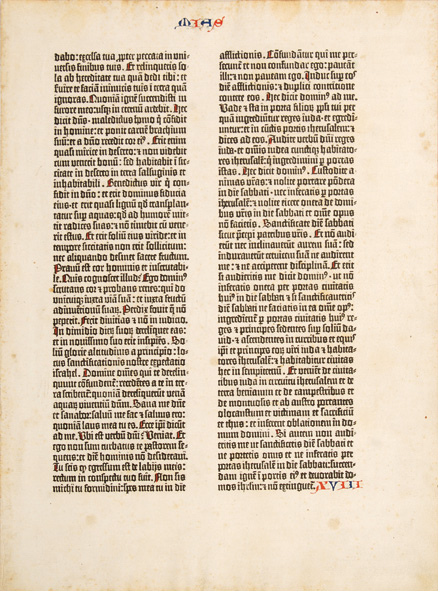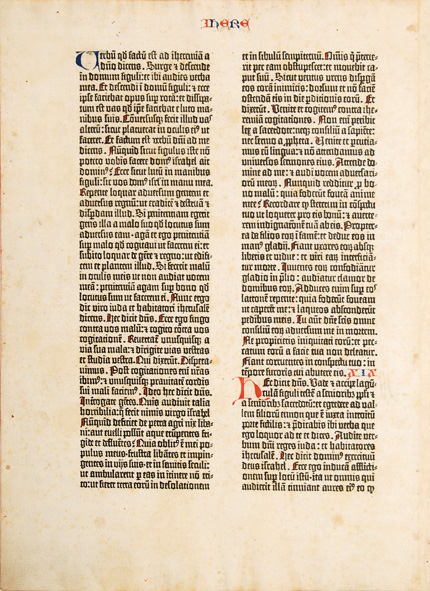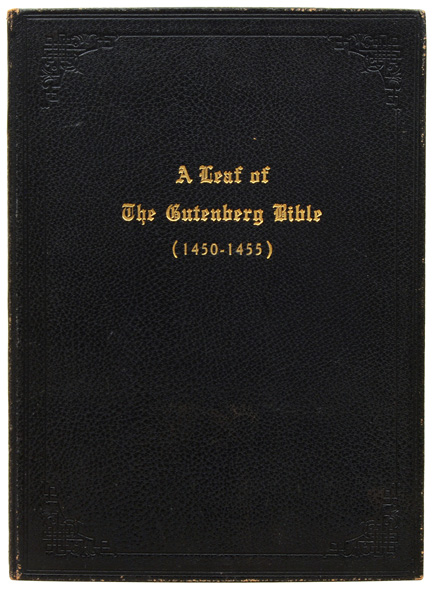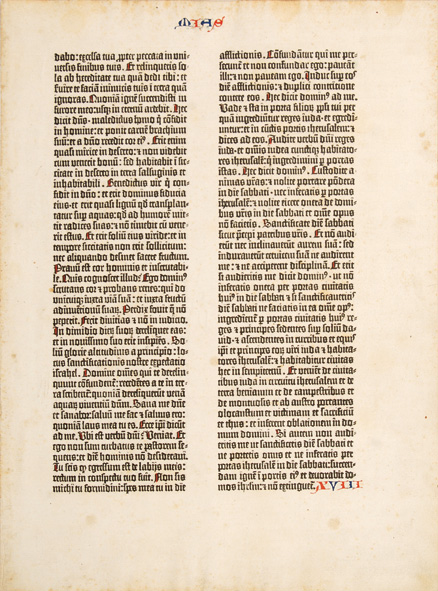
A leaf from the Gutenberg Bible containing the Old Testament, Book of Jeremiah.
We made an exciting acquisition this week, a single leaf from a copy of the Gutenberg Bible, the first substantial book produced using movable type. Also known as the 42-Line Bible, it was printed in Mainz between 1450 and 1455 by Johann Gutenberg and his business partner Johann Fust. Gutenberg’s genius lay in his development and combination of three distinct technologies:
- Movable type – each letter was an individual unit cast from metal, meaning that text could be efficiently assembled, broken down, and reassembled. Other techniques for producing type had occasionally been employed in Europe and China, but Gutenberg, who had trained as a goldsmith, perfected the process of casting the individual pieces so that they could be produced quickly and easily.
- The printing press – based on screw-driven wine and olive presses, this was one of the world’s first mass-production machines.
- Ink – Traditional water-based inks were too thin and runny to be used in mechanical printing, so Gutenberg developed a thicker oil-based ink that would adhere to the type.
Gutenberg probably printed other small books and ephemeral items, but little evidence of these survives, and it was the Bible that would stand as his masterpiece. Its appearance was based on manuscript Bibles, with the type designed to mimic hand-written text and space left in the margins for illuminations (many surviving examples contain beautiful designs commissioned by the original purchasers). Gutenberg also planned to print red initial letters, but this was inefficient because it required two press pulls. Instead, spaces were left within the text so that scribes could finish the job. It is estimated that 160–185 copies were printed, with a small number on vellum, the traditional material of book pages, and the rest on paper, which was more suited to printing.
Though Gutenberg’s business eventually failed, printing quickly spread across Europe and was firmly established in most regions by 1500. Today there are 48 known copies of the Gutenberg Bible, of which only 21 are complete, and other copies are known from fragments. Most are in institutions, and the last copy to appear at auction fetched two million dollars in 1978 (Christie’s New York, 7 April, 1978, lot 1); a similar copy today could be worth up to 35 million. Our leaf was taken from a Gutenberg Bible in the 1920s, when a New York book dealer named Gabriel Wells divided an imperfect copy into individual leaves and a few larger fragments, selling them in morocco folders along with a bibliographical essay by prominent book collector A. Edward Newton. These became known as “Noble Fragments”. Ours is from the Old Testament, containing Jeremiah chap. 18, with parts of chaps. 17 and 19.







